The Most Popular Mirrorless Cameras and Lenses (2013 Edition)
Love them or loathe them, mirrorless cameras are carving out an ever-expanding niche within the world of picture taking. If you can put up with their lack of an optical viewfinder, they offer lightning fast image capture and an impressive image quality-to-size ratio.
Little wonder, then, that most of the big manufacturers now have at least one mirrorless offering on the market. Whilst mirrorless sales were initially slow to take off, it is now evident which models are proving popular with the consumer – here’s a round-up…
Sony NEX Series
The NEX series, produced by Sony, has proven extremely popular in the last couple of years, and more recently their NEX-6 and NEX-5R. Superficially, the NEX-6 looks like a compact with an oversized lens, whilst the NEX-5R is even thinner, but Sony have crammed some serious imaging power into these modest proportions.
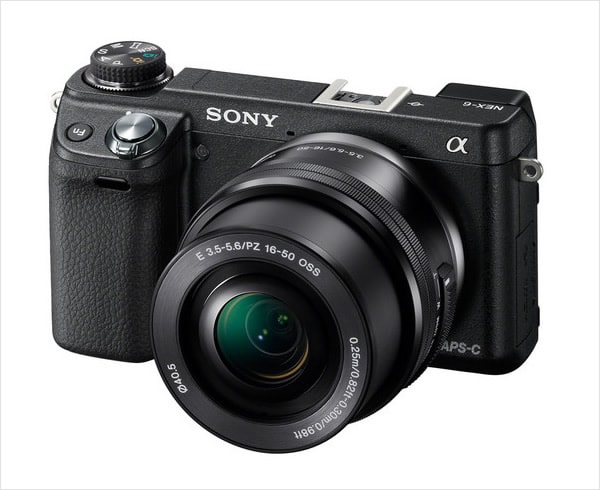
Sony Nex-6 on Amazon
Both cameras feature a DSLR-sized APS-C 16.1MP sensor, which produces clean images, and great video thanks to full 1080p HD recording. The NEX-5R retails for a reasonable $548/£459 (body only), the extra features on the NEX-6 – a relatively high resolution electronic viewfinder and some good physical manual controls – come at a price; the NEX-6 will set you back around $748/£619.
The NEX series works with Sony’s e-mount lenses, which, unfortunately, heavily restricts your options. Thus far, Sony have only manufactured a dozen lenses for the NEX system, and third-party lens manufacturers like Sigma, Rokinon, Tamron and Zeiss have only produced a couple each.
Other than the optional kit lenses, Sony’s 10-18mm f4 OSS has proven to be a popular lenses among NEX owners. The 10-18mm is heavy, but optically sound, although it doesn’t come cheap, retailing at about $848/£729. As a budget alternative, Sigma’s pair of e-mount prime lenses – the 19mm and 30mm, both f2.8 – are respectable alternatives, and are much more affordable at around $150/£100 each.
Canon EOS M
Despite being the new kid on the mirrorless block, Canon have shifted vast numbers of their EOS M compact system camera (CSC). The mid-market Canon EOS M (from around $780/£529) has received some pretty favorable reviews since it was launched, and its specifications make for impressive reading: an 18MP APS–C sized sensor, an ISO range of 100-25600, and a burst speed of 4.3 images per second.
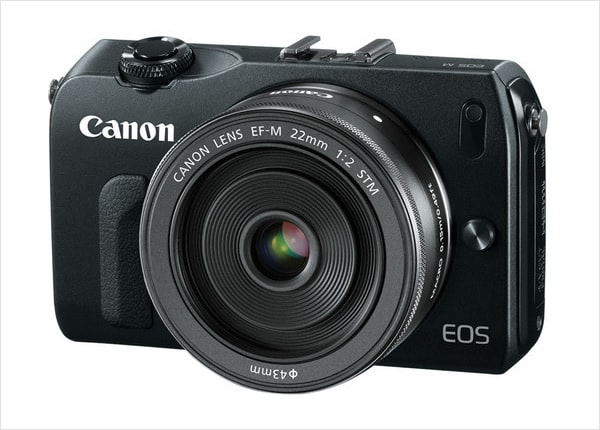
Canon EOS M on Amazon
Lens-wise, the EOS M-mount options are virtually nonexistent; the only two lenses available (at the time of writing) are the two kit options – the 18-55mm f3.5-5.6 STM IS and the 22mm f2. Purchase the optional EF-EOS adaptor, however, and you can put any modern Canon EF lens you like on the EOS M.
Micro Four Thirds
Panasonic and Olympus have together developed a large range of mirrorless cameras over the years, and they are still leaders of this particular pack.
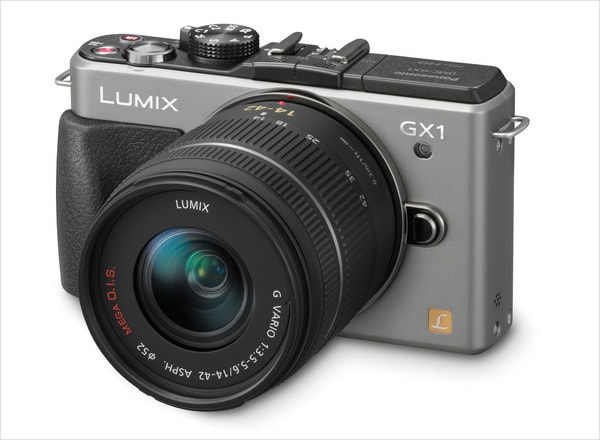
Panasonic Lumix G on Amazon
The Panasonic G series has gone from strength to strength, perhaps in part aided by their DSLR-mimicking looks, while Olympus has gone for a strategy based on releasing as many of their classically styled OM and PEN series cameras as possible. The respective picks of the bunch are Panasonic’s GH3, and the catchily-named Olympus OM-D EM-5, which are both, in essence, mirrorless DSLRs with four-thirds size sensors. These two cameras also look like DSLRs when it comes to price – the Panasonic will set you back an eye-watering $1298/£1199, whilst the Olympus costs $1199/£979.
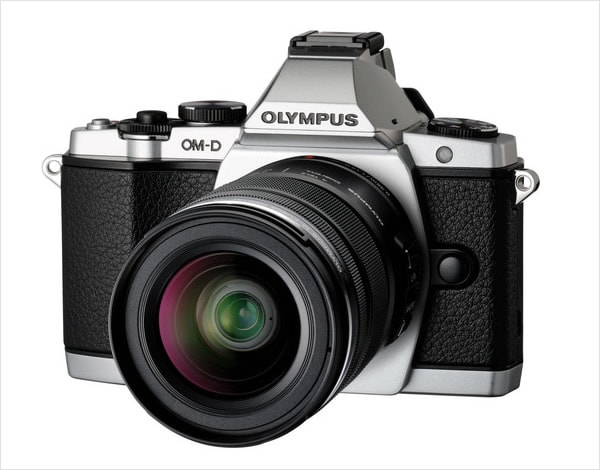
Olympus OMD EM-5 on Amazon
Buying a camera from one of these two manufacturers will open up the world of micro-four-thirds lenses, which means you’ve got a good range to pick from. If you like the wide-angle look, you can’t go wrong with the Panasonic Lumix G 7-14mm f4 ($959/£838), and if you need to get a bit closer to your subject, the Panasonic Lumix G VARIO 45-175mm f4-5.6 provides significant bang for your 359 bucks (£299).
Fujifilm
Fujifilm has recently seen a surge in popularity, mostly as a result of their launching of the X10 and X100 mirrorless cameras. Both of these cameras are equipped with Fuji’s own X-Trans sensor technology, which has a different pattern of pixels from the usual Bayer pattern; the result is that moiré is no longer a problem, so Fuji can remove the blurring anti-aliasing filter found on most sensors, which is normally needed to disguise moiré.
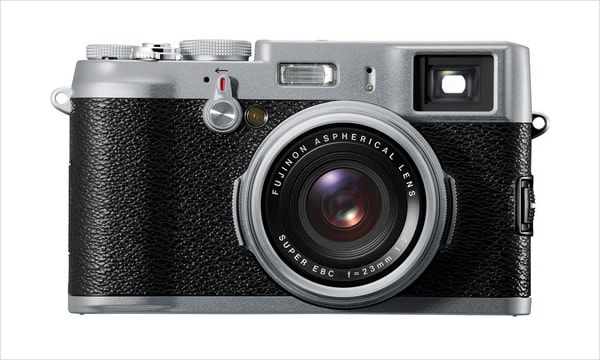
Fujifilm X100 on Amazon
If that sentence made no sense whatsoever, the short explanation is that the images this sensor produces are bitingly sharp. The prices of these Fujifilms – $489/£299 for the X10 and $1049/£569 for the X100 – are very reasonable, but it must be said that, since those cameras have fixed lenses, they may appeal more to purists.
Nikon & Pentax
This round-up wouldn’t be complete without Nikon and Pentax. Nikon have tried very hard to sell their 1-series J2 and V2 mirrorless cameras, but neither has been particularly successful, and this can probably be attributed to the fact that other cameras mentioned above are simply better value for money.
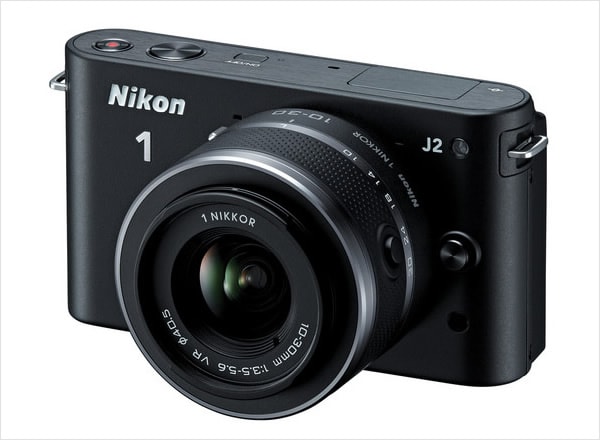
Nikon J2 on Amazon
The J2 (around $396/£349) isn’t exactly the most expensive camera on show, but it natively uses Nikon 1-fit lenses, of which only eight are available; you’re going to need an adaptor to use “proper” Nikon lenses. At $189/£229, it is a pretty large hit on top of the cost of the camera.
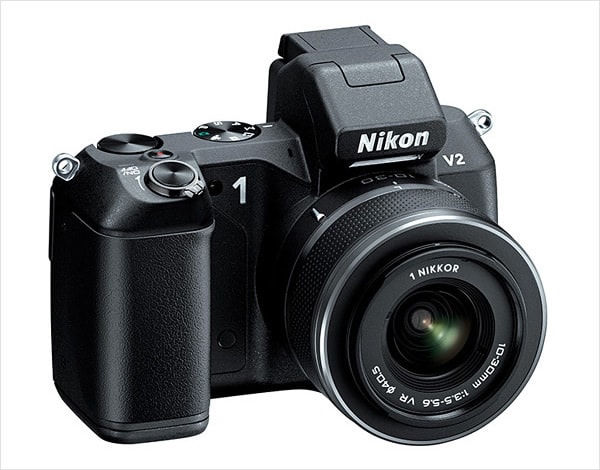
Nikon V2 on Amazon
The V2 is a more impressive offering – hence the $746/£699 price-tag – with 14.2 MP, 60 frames-per-second shooting and a nice digital viewfinder. I’d love to recommend the V2, but while there remains a near-requirement to purchase a lens adaptor, the V2 will remain something of a white elephant.
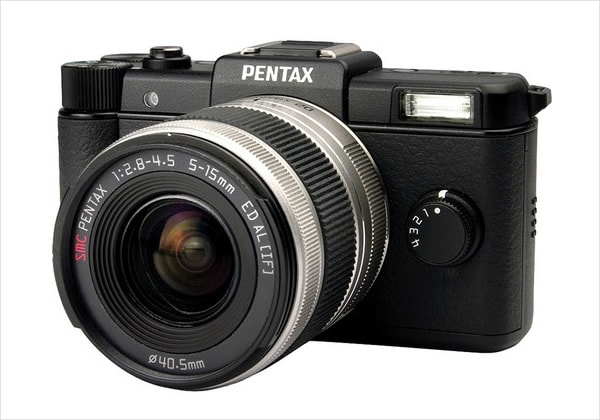
Pentax Q on Amazon
The Pentax Q also deserves a mention; it’s cheap, quite good looking (if retro is your thing), and it’s amazingly compact. It is “slip into your coat pocket” compact, actually, which makes it an ideal mirrorless choice for those wanting a compact camera replacement.
Personal Pick
For what it’s worth, my pick is either of the Fujifilms, but the nature of the mirrorless market is such that nearly every type of photographer will be able to find a camera to suit them.
Note: all prices in this article are the lowest known prices to be found at reputable dealers at the time of writing.
